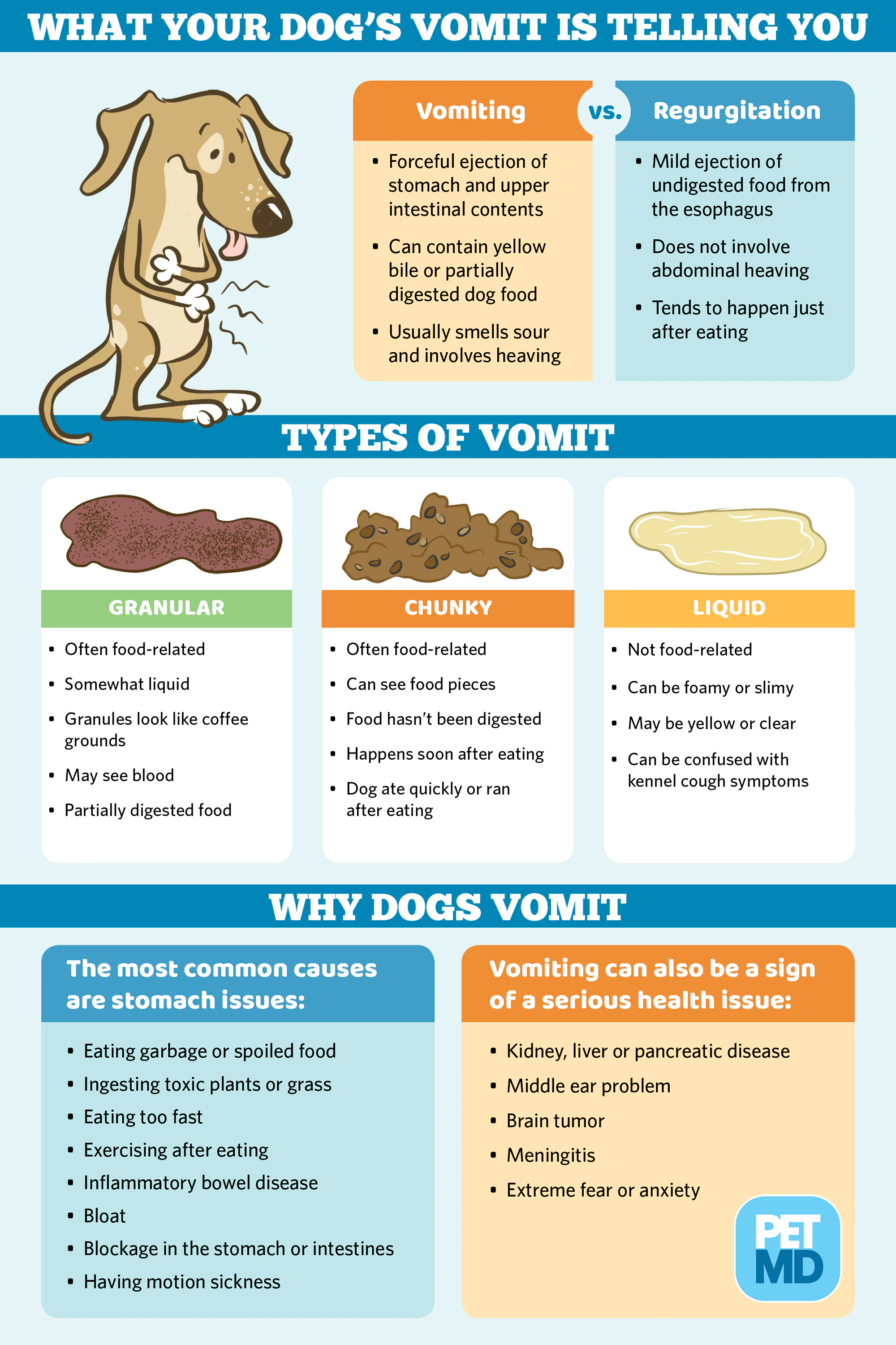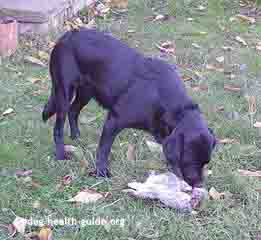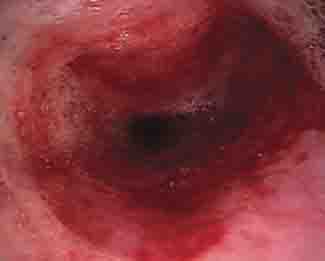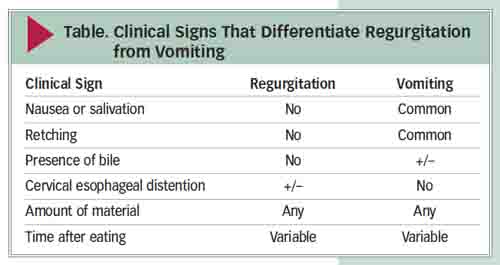Table of Contents
Causes | Symptoms | Diagnosis | Diagnosis by Vomit Color | Treatment | Diet | Brochures | Q&A
Summary:
"Vomiting in dogs results from various causes, including ingestion of human food, foreign objects, infections, parasites, stomach ailments, pancreatitis, electrolyte imbalances, or kidney issues. Certain diseases can also induce vomiting due to toxin accumulation in their bloodstream.
This leads to gastritis, triggering inflammation in the stomach. Treatment hinges on the specific cause, encompassing dietary adjustments or prescribed medications. Often, the primary culprit is spoiled food or ingesting non-edible substances.
For an isolated vomiting incident where the dog seems otherwise healthy, home care suffices. Following these guidelines is crucial: refrain from giving anything orally (food or water) until vomiting stops for several hours and the dog exhibits improvement. Administering anything orally too soon during ongoing vomiting can exacerbate the issue.
However, if a dog vomits three times or more within an hour or shows additional concerning symptoms, immediate veterinary consultation is imperative. Acute vomiting generally has a positive prognosis, while chronic cases' outlook depends on the underlying cause."
What Your Dog's Vomit is Telling You

Source: PetMd
Causes
There are many possible causes for vomiting in dogs. These include:
Dietary problems
- Food allergies and food intolerance
- Sensitivities to an ingredient in your dog's diet
- Overeating
- Eating Spoiled food
- Table scraps or human food
- Ingesting Foreign items (cat litter, plants)
- Eating Raw Food
- Ingested dog hair
 Eating Spoiled or Raw Food When Outdoors Can Cause Vomiting in Dogs
Eating Spoiled or Raw Food When Outdoors Can Cause Vomiting in Dogs When a Dog Eats Too Much Grass, It Can Make A Dog Vomit.
When a Dog Eats Too Much Grass, It Can Make A Dog Vomit.Some Experts Believe That Dogs Eat Grass To Relieve An Upset Stomach (3)
- Parasites: vomiting due to parasites can be determined with a stool sample
- Electrolyte (chemical) imbalance: An electrolyte imbalance can cause vomiting, or it may be caused by dehydration due to vomiting. Your vet can test for an electrolyte imbalance with a blood test. In general the table salt (NaCl) in excess can induce vomiting.
- Stomach ulcers (caused by skin mast cell cancer or medications such as aspirin)
- Stomach cancer
- Uremia (signs of dog kidney failure)
- Forceful cough
- Foreign object wrapped around the tongue (e.g; a piece of string)
- Toxins or dog poisoning such as lead poisoning
- Medications: Antibiotics or NSAIDs that are prescribed as antiinflammatories can cause vomiting in dogs by causing ulcers or gastritis
- Grass
Diseases and Vomiting Dogs
There are several diseases that have dog vomiting as a symptom. These include:
- Canine
Pancreatitis:
in cases of canine pancreatitis vomiting will appear suddenly and will
be sever. Dogs may suffer from a pancreatic tumor or suffering from the
problem due to the consumption of garbage.
- Canine Kidney Failure: If the kidneys are not functioning properly due to toxins such as poisoning, one result could be vomiting. At first, vomit dog frequency is occasional. As the kidney disease progresses dog vomiting becomes more frequent. Other symptoms include frequent urination and drinking. It can take years or months for the disease to develop.
- Pyometra: A female dog that has not been spayed can develop an infection in the uterus. The dog will lick vaginal discharge or pus causing a dog to vomit. This infection also causes increased urination and drinking
- Dog Liver Disease (hepatobiliary system disorders): Liver disease in dogs can cause a vomit dog problem. Other symptoms include increased urination, drinking, yellow skin tone where there is no fur(jaundice) and possibly canine seizures.
- Dog Bladder Blockage: If the bladder ruptures or is blocked it can trigger vomiting. Accompanying symptoms include painful urination and stomach pain.
- Ketoacidosis: This is a type of diabetes that can result in vomiting. Other symptoms include frequent urination, increased thirst and depression.
- Addison's Disease (hypoadrenocorticism): Hormonal problems cause vomiting. Other symptoms include weakness and diarrhea.
- Inner canine ear problems: Inner ear illnesses can result in vomit dog problems. This includes motion sickness.
- Illnesses that occur due to vaccines that do not take hold: vomiting can be caused by diseases such as parvovirus and distemper.
- Diabetes Mellitus
- Mastocytosis: Too many mast cells in the dog's body. Mast cells are the kind of cells, which reacts to allergies. These release histamine.
- Inflammatory bowel disease
- Stomach ulcers
- Infection (bacterial or fungal)
Symptoms
Dogs vomit a variety of things and ways. It may be undigested dog
food or partially digested, unidentifiable matter. It may be
mostly liquid. It may have various colors. Take note of what the vomit
looks like and if there are any other symptoms such as diarrhea.
If you take your dog to the vet, he or she will want to
know that information.
If your dog vomits once or twice, there is usually no reason to run to the vet. If your dog vomits multiple times, however, and seems unable to keep anything down, including fluids, a trip to the vet is warranted.
What To Do If A Dog Vomits Blood
An exception is if your dog throws up what appears to be a mix of dog vomit and blood, then see a vet. The cause is either temporary such as if your dog ate something he or she shouldn't which is causing irritating to the gastrointestinal tract or something systemic where there is a problem with the gastrointestinal tract that requires a thorough examination.
Signs of Dehydration
There are two easy ways to check for dog dehydration:
- Run a finger along the space between your lips and gums. Do the same with your dog. If your dog's gums feel dry and not wet like yours, then your pet may be suffering from dehydration.
- The other method is called tenting. Pull the skin gently up along the pets neck in one spot to form a temporary tent. The skin should pull back into position in 2 seconds or less. If it does not, then the dog may be dehydrated.
If you aren't sure, or suspect that your dog is dehydrated, immediate
veterinarian attention is needed. Dog can go days not eating, the same
isn't true for water, they need to always stay hydrated.
Symptoms That Call For a Trip to The Veterinarian
- Puppy vomiting
- Vomiting in an older dog
- Signs of dehydration
- Suspected dog poisoning
- If you suspect your dog swallowed an object or toy
- Blood in the vomit
- Vomiting combined with behavior change such as lethargy (tiredness)
- Vomiting 3x or more in an hour
- Vomiting that lasts for more than 1 day
- Inability to keep down water
- Projectile (violent) vomiting
Symptoms Associated with Disease
There are several signs and symptoms that indicating that an underlying
disease is causing the canine vomiting problem. These symptoms
include:
- Excessive urination (polyuria)
- Excessive thirst (polydypsia)
- Enlarged liver (hepatomegaly)
- Cataracts
- Jaundice
- Fluid accumulation in the abdomen (ascites)
- Fever
- Slow heart rate (bradycardia)
- Mouth ulcers
- Pale mucous membranes
- Presence of a mass in the abdomen
Gulping Water and Grass in Dog Vomit
Vomiting in dogs involves the forceful ejection of stomach and upper intestinal contents, which can include yellow bile or partially digested food, and typically emits a sour odor. This may happen soon after eating or at any subsequent time, often following indications of nausea such as drooling, lip licking, and excessive swallowing.
Often, when dogs experience stomach discomfort, they consume grass, an action that may occasionally trigger vomiting. Yet, consistent grass-eating could potentially lead to an increased intake of pesticides and parasites, posing potential health concerns.
Dogs may consume grass before or after vomiting, possibly to instigate vomiting or shield the esophagus, as grass can encapsulate sharp items like bone fragments. However, excessive grass eating can worsen the situation. Some dogs might also consume their own vomit, an instinct that, while unattractive to humans, generally does not harm dogs.
Due to the severe dehydration caused by vomiting, dogs may be inclined to drink large amounts of water, which could induce further vomiting. Therefore, it's recommended to moderate their water intake by allowing them to consume only small quantities at a time.
Dog Vomit and Color
| Vomit Color | Potential Cause |
|---|---|
| Dog Vomiting Yellow | Yellow vomit is often a result of bile secretions from an empty stomach, typically occurring during night or early morning hours. This can be triggered by various conditions such as acid buildup or reflux that induce nausea when the stomach is empty. |
| Dog Vomiting White Foam | White and foamy vomit may indicate a buildup of stomach acid. The foam is usually formed when the vomit comes into contact with air or gets churned in the stomach prior to expulsion. |
| Clear, Liquid | Vomiting clear liquid signifies either stomach secretions or accumulation of water in the stomach. This often happens when a dog drinks water while feeling nauseous and is unable to retain the ingested water. |
| Mucus-Like, Slimy | Vomit that appears slimy or mucus-like often results from drooling that accumulates in the stomach and intestinal tract due to significant irritation. The act of vomiting provides the dog some relief from the nauseous feeling. |
| Bloody (Red or Pink) | Presence of blood in the vomit should be treated seriously. Blood in the upper GI tract induces nausea and may be expelled through vomit. Blood clots, fresh blood, or vomit with a coffee-ground appearance might signify internal bleeding in the stomach or upper small intestine due to conditions like ulcers, tumors, clotting disorders, or ingestion of rat poison, necessitating immediate veterinary care. |
| Brown | Brown vomit can signify regurgitated food that was not fully digested in the stomach, often indicating that the dog ate too hastily, didn’t properly chew the food, or swallowed excessive air. However, brown vomit might also contain blood traces or indicate coprophagia (feces consumption). Therefore, a closer inspection of the vomit is recommended. |
| Green | Green vomit can be a result of grass consumption or contraction of the gall bladder before vomiting, leading to bile presence in the stomach. |
Worms in Dog Vomit
Worms and other infectious organisms can cause vomiting in dogs. If there are live worms or a large infestation, such as with roundworms, a dog may vomit them up. (More commonly, they will shed eggs that can be found in the feces of even what appears to be healthy dogs, and that is the only way to diagnose them.)
Diagnosis
Your veterinarian will check to see if your dog is running a fever. They will then palpate your dog's abdomen to check the internal organs. He or she may do an x-ray to make sure your dog has not swallowed any foreign objects, especially in cases where dog shows signs of choking. For chronic cases (vomiting 7 or more days), a biopsy of cells from the digestive tract may be required for a definitive diagnosis. Other tests include blood tests and urinalysis.

Dog Regurgitation vs. Vomiting
It can be helpful to bring a dog vomit sample to the veterinarian's office. This will help the vet differentiate vomiting from regurgitation, which to the owner can appear to be vomiting, although it is a different process in the body. Regurgitation is caused by food that is expelled by problems in the esophagus. Regurgitated food appears to be mostly undigested food, possibly covered with mucus and may have a shape as if it came out of a tube. Don't be surprised if a dog tries to eat regurgitated food. A weakening of the muscles that control the esophagus is called megaesophagus. This condition can result in food entering the airways causing symptoms such as cough and/or pneumonia. Regurgitation occurs right after eating where vomiting will occur at random times.
Symptoms associated with dog vomiting are frequent swallowing, salivation and depression. You will see an abdominal contraction prior to the dog vomiting.
 It Is Important To Differentiate Regurgitation from Vomiting Before Reaching a Diagnosis. A veterinarian can distinguish the two with a clinical examination and medical history. (2)
It Is Important To Differentiate Regurgitation from Vomiting Before Reaching a Diagnosis. A veterinarian can distinguish the two with a clinical examination and medical history. (2)Dog Vomiting Treatment
Home Treatment for a Vomiting Dog
If your dog is taking any medications consult your veterinarian before
starting home treatment to see if the medications should be temporarily
stopped.
- Step 1: Withhold Food And Water
For 2 - 4 Hours
If your dog has been unable to keep food down, you should withhold food AND water for 2 - 4 hours. This will enable the digestive system to rebalance itself and rest. Feeding too soon is one of the most common causes of continuation of stomach problems, even if a dog appears hungry.
- Step 2: Provide Water After
Several Hours (2 or more) If The Patient Has Stopped Vomiting and
is Feeling Better
After 2 hours provide water or an electrolyte solution such as Pedialyte (found in every pharmacy) in the quantity of 1 cup per 40 pounds of dog body weight, every 2 to 3 hours, all day and night. Over the 12 hour period, continue to increase the amount of water offered. If the patient has not stopped vomiting, wait several hours. Feeding or drinking too soon can initiate more vomiting.
If dog vomiting after drinking water continues, then withhold water or Pedialyte for 1 hour. After the hour provide ice chips and see if your dog can hold them down. If vomiting continues, consult your veterinarian.
- Step 3: Feed A Bland Diet, Then
Regular Diet
After twelve hours with no vomit dog problems, offer a bland diet to your dog. Introduce small amounts of food at a time until you see that your dog is able to tolerate the food. As a general guideline, offer 1/2 cup of food for every 50 pounds of dog body weight. For example, a 20 pound dog would receive 1/4 cup of food. If the patient vomits after the first feeding, then wait an hour before trying again.
If the dog vomiting continues, consult with a veterinarian. Over the next 3 days, continue to feed your dog a mix of the bland food and regular diet, slowly increasing the amount of regular food. By the 4th day the dog can resume a normal diet.
If bouts of vomiting continue and if the problem is attributed to a sensitive stomach, then a special diet such as those offered by Hill's Science Diet or Iams might be required.
Treatment By A Veterinarian
Treatment in the Vets office will focus on addressing immediate problems such as dehydration and to determine the underlying cause of the problem. At the same time, the Vet will examine the patient and take a medical and dietary history.
If your dog is dehydrated your vet will administer
subcutaneous fluids.
This is similar to an IV, except instead of a needle going into a vein,
the needle just goes under your pet's skin. You'll see a bulge there
for a bit until the fluid is fully absorbed. After the patient has any
immediate needs addressed, causes such as parasites or disease will be
treated.
Chronic Dog Vomiting
Vomiting that continues for 5 - 7 or more days is considered a chronic condition. If this is the case, the veterinarian will need to explore the many possible diseases and causes. Sometimes a simple solution such as a change in diet for 3 to 4 weeks will correct the problem. Commonly a dog that eats human food or ingested a foreign object when outdoors is the cause. There are also many poisonous houseplants that result in a problem.
Dog Bland Diet Preparation(1)
There are several options for preparing a bland dog diet. For all recipes, provide 1 cup of food per 40 pounds of dog body weight. These include:
Human Baby Food: Mix together:
- 1 part baby beef, turkey or lamb
- 2 parts boiled white rice
- For vomiting and dog diarrhea, add 1 teaspoon of yogurt with active yeast cultures
- Prepare boiled skinless chicken breast
- Cut into small cubes
- Add 2 parts boiled white rice to 1 part chicken (total 1 cup per 40 pounds of dog body weight)
- For vomiting and dog diarrhea, add 1 teaspoon of yogurt with active yeast cultures
Hamburger and Rice:
- 1 part hamburger (drain the fat before serving)
- Add 2 parts boiled white rice
- For vomiting and dog diarrhea, add 1 teaspoon of yogurt with active yeast cultures
Cottage Cheese and Rice:
- 1 part low fat cottage cheese
- Add 2 parts boiled white rice
- For vomiting and dog diarrhea, add 1 teaspoon of yogurt with active yeast cultures
Brochure Downloads
Dog Vomiting Home Treatment (Source: etown Animal Hospital)
Treating
A Vomiting Dog At Home (Source: Bethlehem
Veterinary Hospital)
Dog
Regurgitation and Vomiting (Source: University
of Florida)
Ask Our Vet A Question or Share Your Story
Have A Dog Vomiting Health Question For Our Editors or Story For Our Readers?
Do you have a Dog Vomiting related Question for our Editors or a Helpful Story to Share? Please include information such as age, sex, breed, medical history, medications your dog is taking, recent changes in behavior, etc.
We will do our best to get back to you quickly (depends on how many questions we receive each day). If you do require an immediate response we suggest using this <online dog veterinary service that is available now.
What Other Visitors Have Asked and Veterinary Suggestions
Click below to see contributions from other visitors to this page...
Vet Suggestions For When a Dog Vomits Daily 




Reader Question: How to help when my Dog Vomits Daily.
Our short haired pointer has been vomiting daily for about one month. She is 3, we rescued …
Urgent Help Needed for Potentially Neglected Dog with Vomiting and Malnourishment Issues Not rated yet
It's my friends sister dog, I'm really worried when I first seen him he was very Malnourished. My friend moved in with his sister and has been trying to …
Repetitive and Occasional Eating Grass and Vomiting Not rated yet
Five year old mixed breed rescue that is on a good diet but still eats grass, has loud abdominal noises, then vomits eventually. I have tried everything …
Dog With Diarrhea, Vomiting and Flatulence Not rated yet
Reader Question: How to help a dog with frequent bouts of vomiting, gas and lose stools
We have a sterilized rescue Yorkie (aged about 10/11yrs). …
Dog Suffering from Pain and Vomiting Not rated yet
Reader Question: Dog Suffering from Pain and Vomiting
I have a 3 year old Wienner dog who started having pain and then vomiting about a month ago. …
How to Treat Dog Vomiting Not rated yet
Reader Question: How to stop dog vomiting
My dog is 9 years old a mix of German Shepard, yellow lab, and Chow. The past couple of days HE has been …
Dog Vomiting Clear Liquid Not rated yet
Last night at around 3AM my dog started to vomit a massive amount of clear yellow liquid. It smelled really sour, almost like bile. After drinking some …
Dog Vomiting Clear Yellow Liquid Not rated yet
Last night at around 3am my dog started to vomit a massive amount of clear yellow liquid. It smelled really sour, almost like bile. After drinking some …
Older Lethargic Dog Regurgitating Food and Vomiting Not rated yet
Reader Question Regarding an Older Dog that is Regurgitating Food and Vomiting:
My dog is a 16 year old mixed breed. Part Labrador and possibly German …
When to See Vet for Dog Vomiting that Contains Blood Not rated yet
Reader question: Should I arrange an emergency visit with a vet for dog vomiting that contains blood?
I have a 3 1/2 yr old Staffordshire terrier. …
Dog Vomiting Monthly Not rated yet
We have a 2 yr old Havenese dog, almost monthly we have problems with his health, he vomits and has diarrhea since we've had him 1 yr ago. We have changed …
Yellow Vomit Not rated yet
My dog Midnight is 15 or 16 years old in human years, and she hasn't been eating since May 7, 2010. She keeps trying to dig like she wants to get out of …
Dog Passing Blood in Urine After Moving to New Home Not rated yet
We have a male poodle who is about about 1 and 1/2 years old. We were given "Buddy" by my husband's niece a couple of months ago.
Well Buddy has been …
Dog Vomiting Blood and Unusual Behavior Not rated yet
My 8 year old bichon threw up and passed a lot of blood on Nov. 09. The vets ran every test imaginable and came up with nothing. He was hydrated and …
References
(1) Bethlehem Veterinary Hospital
(2) Regurgitation or Vomiting?
Gallagher, Alex; DVM, MS, DACVIM, University of Florida
(3) Perdue School of Veterinary Medicine
Chronic Vomiting in Dogs and Cats: A Practical Diagnostic Approach
Leib, Michael S, ACVIM


